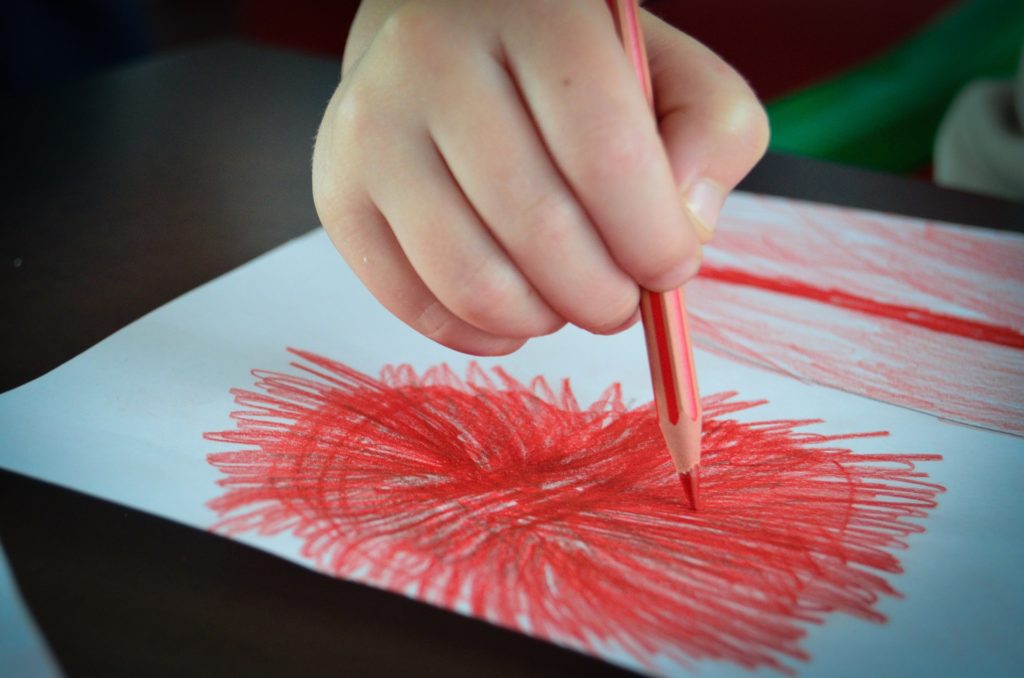Intro to Art Appreciation (for Preschoolers!)
Crayons. Finger paints. Glitter. Cotton balls. Glue sticks. All things that come to mind when you think about art for young children. Pinterest is teeming with ways to involve children in creating pieces of art. While I’m not a big fan of coloring-inside-the-lines, everyone-copies-teacher sort of projects, giving the children opportunities to learn techniques and media, as well as to begin expressing themselves through these things, is really fantastic.
Creating art, however, is only one side of the story.
Young children also benefit immensely from exposure to fine art.

The Value of Aesthetic Experiences
Imagine going through life with no concept of beauty. No sunset ever made you stop in your tracks to relish it. Every vista and landscape looked the same. You never savored a walk through the woods because of the way the light filtered through the leaves. Music and dance never made you rejoice, laugh or weep. Everything in your life was utilitarian and bland, rather like the Utopian world in The Giver.
If something is aesthetic, then it is ‘designed to give pleasure through beauty’ (Oxford Dictionaries). Growing up with out an aesthetic sense means a life void of that pleasure and, in my opinion, a very bland life indeed. Therein lies the value of aesthetic experiences: beauty for beauty’s sake, the emotions that they bring, the flavor they bring to life.
When we give our children opportunities to develop their aesthetic sense – their ability to appreciate beauty, to love that which is beautiful, and to be moved by it – we are giving them a very valuable gift indeed. After all, ‘whatever is lovely, whatever is admirable–if anything is excellent or praiseworthy–think about such things’ (Philippians 4:8).

Aesthetic Sense for Toddlers and Preschoolers
How do we help our young children develop an appreciation for beauty? As Charlotte Mason says:
We want to open their eyes and minds to appreciate the masterpieces of pictorial art, to lead them from mere fondness for a pretty picture which pleases the senses up to honest love and discriminating admiration for what is truly beautiful– a love and admiration which are the response of heart and intellect to the appeal addressed to them through the senses by all great works of art.
First, I think it is important to acknowledge that our children, even from quite an early age, have the capacity enjoy beautiful things. It’s very easy to assume that children have no interest in art – they want Peppa Pig or Thomas the Tank Engine. But how often have they had the chance or the encouragement to really look at a masterpiece painting? How often do we give them an example to follow? Gentle exposure to beauty – painting, sculpture, music, dance and so on – combined with our example in pausing to appreciate it can go a long way.
Second, we can help our children develop a vocabulary for aesthetic experiences. Discussing art, or anything of beauty, with your child is incredibly valuable. You can talk to your child about colors, shapes, textures and lines in a painting, as well as the emotion it invokes, what they like or don’t like about it, and what your child imagines is happening in the depicted scene. As children gain the ability to describe what they see in detail, they develop the capacity to discriminate between different styles and types of artwork (have you ever had the feeling that one Impressionist painting is the same as the next?), and ultimately acquire their own taste.

Simple Ways to Help Your Child Appreciate Art
Sharing art with your children does not have to be burdensome. And in some ways it’s much more simple than having children create art themselves, since there is much less clean up! The general idea is to give your child access to art, and to seize opportunities to discuss beautiful things as they arise. Here are a few ways that you can help your child develop an aesthetic sense.
- Talk about beautiful things that you notice when you are out and about. The reflection of a bridge over still water, the pattern of the bark on a tree, the colors of the sunset.
- Display fine art in your home where your child can see it. Some nurseries use replicas of fine art to label their classroom (the blocks may have a painting of a carpenter, or the sand box might have a painting of the seaside). You don’t even have to go that far – just tack them to the wall.
- Buy (or borrow) books with beautiful illustrations. Many children’s books are works of art in and of themselves. The Ambleside Online Year 0 book list is a fantastic starting point if you need ideas.
- Look at art with your child and talk about it. Find art that depicts something your child is already interested in (boats? ballet? farm animals?). Print it out or pull it up on your computer, and take it from there. Don’t force it, but do (gently) persist over time. You are offering your child the richness of appreciating beauty, and it is worth it.
Sharing fine art with young children isn’t about emptying your house of cartoon-inspired merchandise. Chances are your child finds those types of things captivating and exciting, and I don’t see a need to devalue them simply because there isn’t a portrait of Peppa Pig in the National Gallery. Instead, incorporating art and discussions of beauty with your child means you are taking a broad view of your child’s growth and development. You see the adult they will one day become, and you recognize the pleasure they will take in the aesthetic. Small, simple steps in the early years will deepen that pleasure, and are a gift to our children.

The following articles were of great help as I wrote this article. I highly recommend clicking through to read them.
